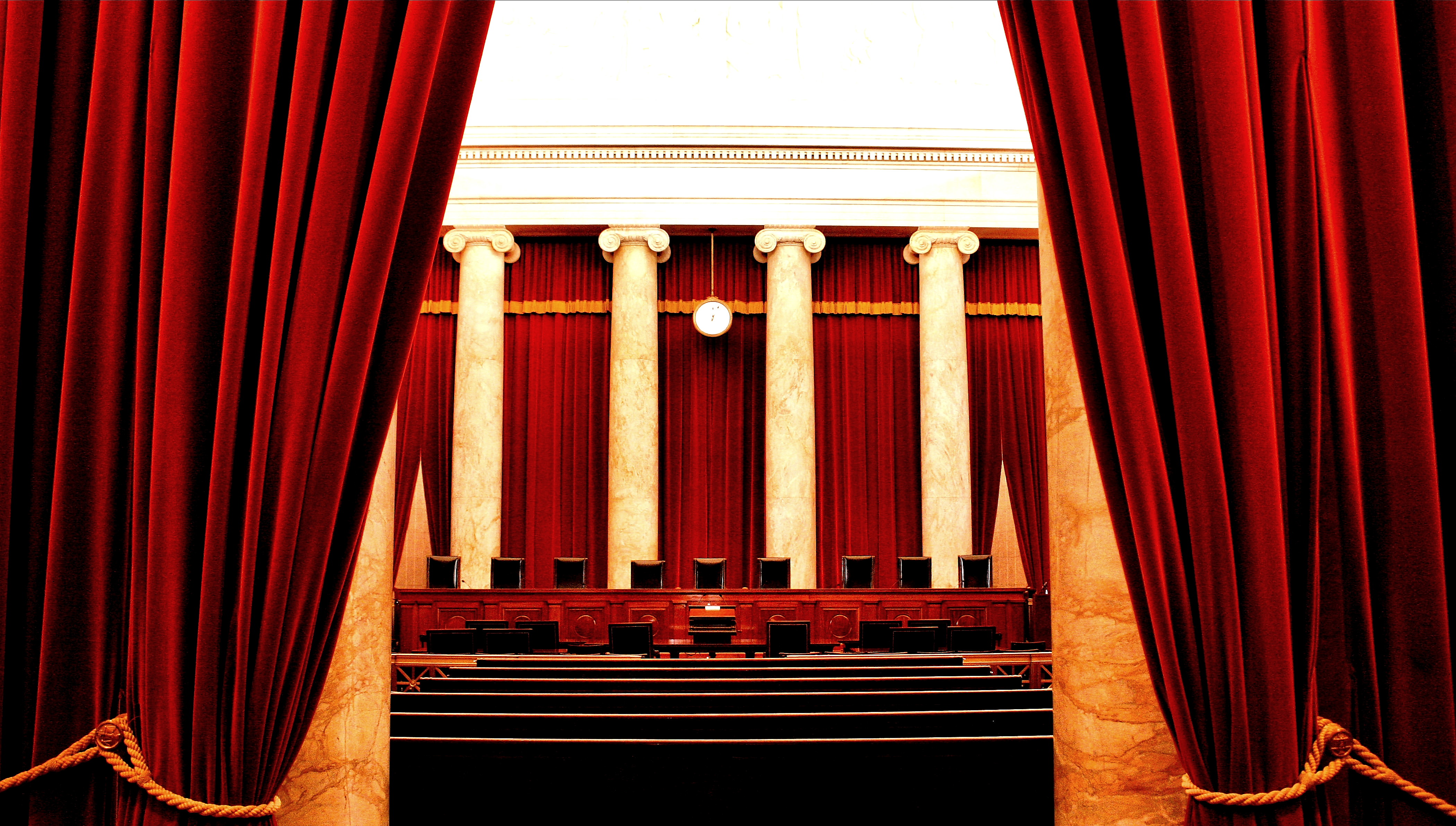Hello, readers! Just in case you’ve forgotten, the disaster formerly known as Election 2012 is now over, and President Barack Obama has been re-elected to a second term in office. So what’s the most important thing on his plate right now? If you guessed “fixing our economy” or “figuring out what the heck is happening in the Middle East and how exactly the United States should be involved,” you’re correct. However, if you guessed “Supreme Court nominations and judicial appointments,” you wouldn’t be far off, either.
The search for potential justices is not as time-sensitive as our fiscal cliff (and, seriously, what is going to happen with that?) or new problems in Israel and Egypt, but the current Supreme Court does have four justices above the age of seventy (Justices Scalia, Kennedy, Ginsburg, and Breyer), two of which might feel comfortable retiring during Obama’s tenure. I find it hard to believe that Kennedy would want to give up his position as Annoyingly Predictable Official Swing Vote of the Supreme Court of the United States any time soon, and there’s not a snowball’s chance in hell that Scalia would retire under a Democratic president, but both Ginsburg and Breyer might want to leave the court within the next four years.
An interesting article was published on November 27 in Virginia Lawyers Weekly (sadly, you can’t read the full article unless you’re a subscriber) which offered forth three names that, potentially, might top the Obama administration’s list of potential Supreme Court nominees. The individuals mentioned were chosen because their names were, as the article says, commonly brought up in “conversations with legal experts.”
The first individual named was California Attorney General Kamala D. Harris, a prominent Obama supporter who SCOTUSblog founder Tom Goldstein believes is Obama’s best pick for the Court. Harris’ mother is from India and her father is Jamaican-American, so she would certainly bring diversity to the bench, but she also has strong legal experience as the Attorney General for a state as large and diverse as California. Interestingly, Harris has said publicly that a position at the Supreme Court is not in her plans, and there has been some speculation that President Obama may also appoint her to his cabinet.
Next on the list was Judge Paul J. Watford of the Ninth Circuit Court—as the Virginia Lawyers Weekly article puts it, he has been “deemed by court watchers as a rising judicial star.” He was an appellate litigation partner at the Los Angeles office of the firm Munger, Tolles, & Olson, and he would also bring diversity to the court. Also, Watford clerked for Justice Ruth Bader Ginsburg (side note: she is a “life hero” of mine), which gives him experience with the Court and denotes a familiarity with constitutional scholarship. However, there is a strong chance that the Republican members of the Senate would filibuster his nomination because he is notably liberal (the website “Progressive Punch” happily announced his confirmation to the Ninth Circuit). He was only confirmed to the Ninth Circuit during 2012, so that might also decrease his chances of nomination.
The third individual named in the Virginia Lawyers Weekly article was D.C. Circuit Court Judge Merrick B. Garland, a “well-regarded” judge whose judicial record is moderate enough to placate Senate Republicans and who has been speculated about for some time now. He was appointed by Clinton in 1997 to the D.C. Circuit, and since then has received high praise. When Justice John Paul Stevens retired, the Washington Post put out a potential shortlist that named, among others, both Elena Kagan and Merrick Garland… If they predicted Kagan, they’re probably not too far off with Garland. He does not bring racial or gender diversity to the table, but his moderation and likeability might be key factors during a potential appointment process.
Other names mentioned in the Virginia Lawyers Weekly article were Janet Napolitano, Secretary of Homeland Security, Jennifer Granholm, former Governor of Michigan, and Kathryn Ruemmler, White House counsel. Napolitano was also mentioned on the Washington Post’s “replacing Justice Stevens” list, and all three women were named in Tom Goldstein’s analysis. This gender bias toward women is due to the fact that Justice Ginsburg would be more likely to retire first (if Breyer is also planning to retire) because she is older and has some serious health issues in recent years. Just as there is a “traditionally black seat” or a “traditionally Catholic seat” on the Court, Obama might want to replace Ginsburg with another woman, despite the fact that Justice Sandra Day O’Connor was replaced Justice Samuel Alito (who is clearly a man).
This article is not meant to be an exhaustive list, nor is it supposed to be an in-depth look at the individuals named in the Virginia Lawyers Weekly article. I thought that the article was worth sharing to those who might not subscribe, though, and I definitely think that it is time for us constitutional scholars to start thinking more seriously about potential nominees. As much as I admire Justice Ginsburg and don’t want her to leave, her departure is a serious possibility, and her theoretical replacement should be chosen with care. With an increasing amount of “high-stakes” cases coming into the Court these days, anyone whom Obama chooses will have a visible impact on America’s future.
